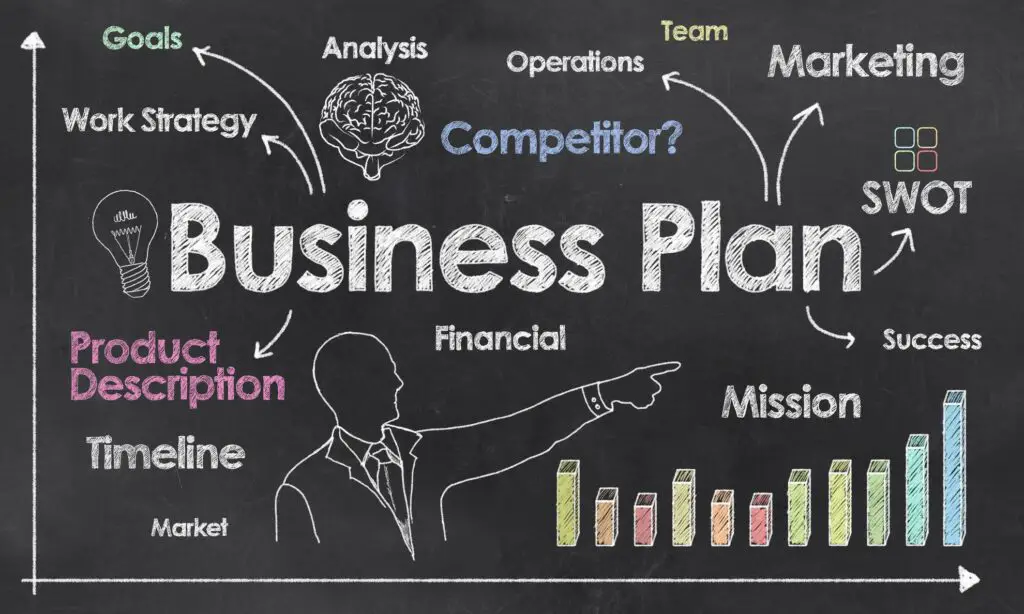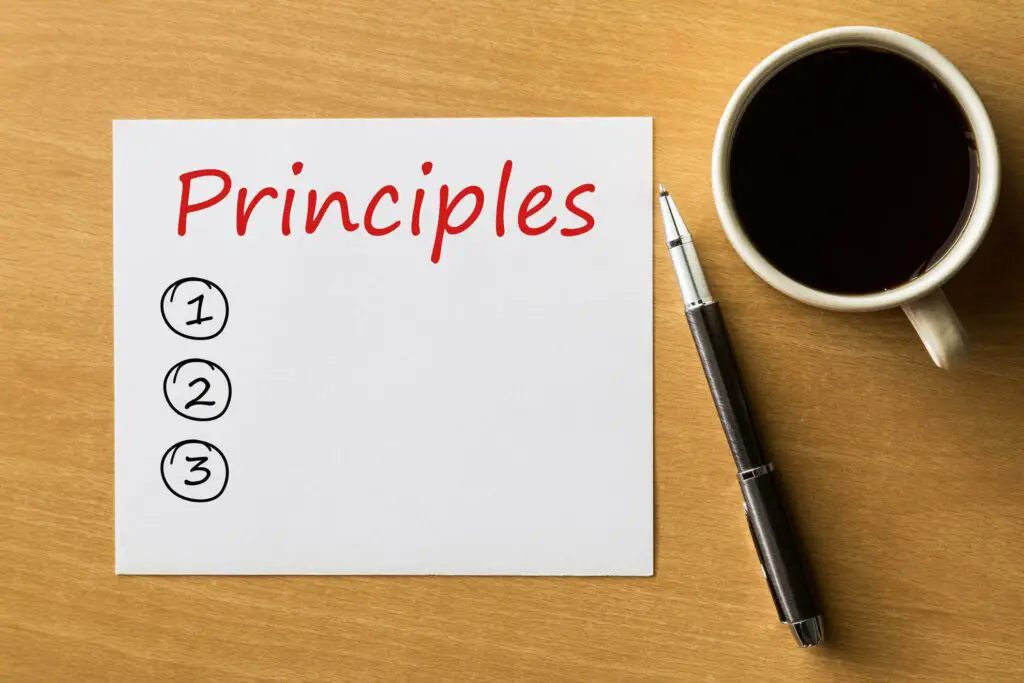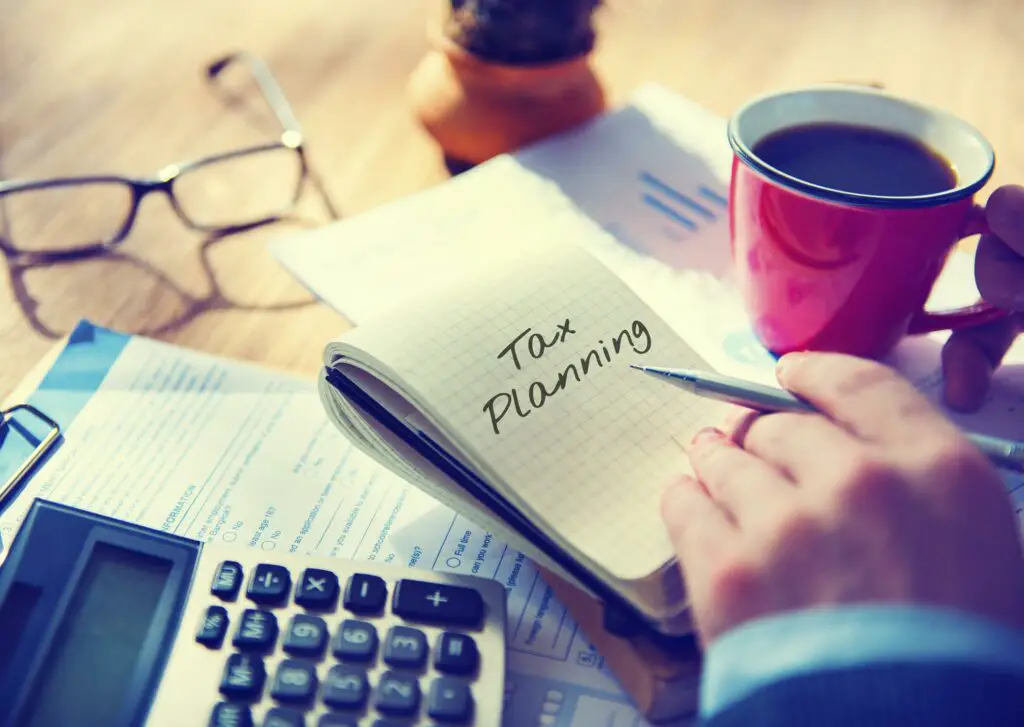Trading as a business involves trading stocks and other financial instruments under a legal business structure, such as a sole proprietor, partnership, or limited liability company (LLC).
Everyone wants to make money, and everyone wants to be free.
You can accomplish both if you’re a successful trader.
And you’re in luck because there’s one thing I know how to do exceptionally well – it’s trading as a business.
You might say, Leo, I don’t need to start a trading business – I’m a new trader. Well then, I’ve got a question: How many successful companies do you think started without a plan? Sure, there are some, but I would bet those with a sound plan faired better over the long run.
And trading is no different. Trading is most successful when it’s done most businesslike.
And for those who are already profitable and ready to go full-time, I’ve got some massive tax-saving tips for you, so stay tuned.
I’ve also sprinkled secrets about becoming a full-time trader that you’ll be hard-pressed to find elsewhere.
I will explain everything you need to know step by step and show you how to become a professional trader running your own successful trading company, whether you’re incorporated.
Before You Can Start Trading
Before creating any business, you need to start with a solid plan and understand where you fit in the market.
But before we jump into the nitty-gritty details of running your trading business, you need to answer five show-stopping questions.
1. What Is Your Why?
Why do you want to be a trader? Many traders start trading because they want to get rich.
Now, it’s possible to become rich trading; however, understand that if you’re not a profitable trader already, the chances of success are slim.
Most studies say that only 5% of traders become profitable. And according to the Small Business Association, this is in stark contrast to starting a business where 33% are still around after year ten.
In other words, if it’s money you’re after, it’s much easier to create an online business than to become a profitable trader.
And no matter how smart you are, trading will slap you around until you’re begging to quit.
You need more than the pursuit of money to keep you in this game.
You need an unwavering passion to play, and you need an advantage.
2. What’s Your Trading Edge?
A trading edge is an observation or approach that creates an advantage over the rest of the market players. Anything that can add a few points to the winning side of the equation builds an edge in your favor.

Most traders lose money in the financial markets because they lack an edge.
I’m also going to say something controversial here:
Risk management isn’t an edge – it’s just good trading – and I can prove it.
Let’s play the coin toss game. If you guess correctly, you get a dollar and lose a dollar if you don’t. You can play this game all day long and cut your losses short, but you’re never going to make a million dollars.
Why? Because you have no edge. The probabilities are not stacked in your favor.
You need an edge to make it full-time, and you need multiple to make it a career.
You need to be the casino – you need to have multiple edges that compound over time. Don’t be a gambler with the odds stacked against you.
So how do you find an edge?
Most edges come from a better understanding of market structure, faster execution speed, or better data and analysis.
For example, a market structure edge may be an exceptional ability to exploit the post-earnings announcement drift (PEAD) anomaly. Another may be the early identification of trends through sophisticated technical or data analysis.
You want to ensure you are on the right side of the stock market as much as you can.
And if you’re struggling to find an edge, I’ve got you covered.
I backtested Scot1and’s slingshot trading strategy at a high level to verify if it has an edge – which it does. If you’re not familiar with Scot1and, he’s a professional trader. He shares his trades publicly on Twitter and has multiple triple-digit years under his belt, with his highest being 305% and last year (2021) being 150%.
Scot1and wanted to find a way to get into solid stocks before the runup and invented the slingshot trading setup. That’s one of his many edges. And this setup can work for you, too, assuming it meshes with your market philosophy and psychological makeup – but more on that later.
Once you have successfully identified and defined your edge, or better yet, edges, it’s time to consider your risk tolerance.
3. What’s Your Risk Tolerance?
Risk tolerance refers to the degree of risk you’re able to take. And while there are multiple ways to define risk, we’ll consider volatility and drawdown for our purpose.
Since your comfort level with uncertainty determines risk tolerance, it can be challenging to be aware of your risk appetite until faced with a potential loss.

You should strive to gain a clear understanding of your risk appetite and your ability to stomach large swings in the value of your portfolio.
Why?
When traders trade above their risk tolerance levels, at best, they’ll lose sleep and make suboptimal decisions the next day, and at worst, they’ll sell out at the exact wrong time.
Risk tolerance is all about understanding yourself – a key characteristic you should possess as a flourishing trading business owner.
And let me tell you when you start a trading business, and it becomes your primary source of income, your risk appetite will change a lot – even for algorithmic traders.
Most traders’ greatest struggle in establishing a profitable trading business revolves around trading psychology.
Finding edges in the market isn’t difficult. I just showed you the slingshot strategy, which is a potential edge that you can incorporate into your trading.
What’s hard isn’t knowing what you should do; it’s doing what you should do – it’s trading like a business.
And risk tolerance is just one aspect of trading psychology.
Psychology And Trading
Trading psychology refers to the emotional aspects of an investor or trader’s decision-making process – it’s how emotions affect your trading, and trading affects your emotions.
There are some important considerations to make here.
Most traders fall into thinking they can achieve trading success with little thought of their psychological makeup.
Successfully aligning your trading strategy with your psychology implies you may need to give up on or change some of your values and beliefs.

For instance, do you value your need to be “right”?.
A trader who values being “right” is more likely to refuse to set a stop and take a slight percentage loss in case the trade goes haywire.
Do overnight moves keep you up at night?
Then perhaps day trading is a better style for you.
You need to find a trading style that suits your trading psychology and addresses your strengths and weaknesses.
This doesn’t mean a risk-averse person can’t adopt a swing-trading style. It also doesn’t mean that if you value being right, you’re perpetually wrong when following your stops.
It just means that traders need to understand why they’re embracing a trading approach and have safeguards against their deficiencies – often, you can flip a weakness on its head.
For example, let’s go back to someone struggling to stop out.
The first issue might be that they do not understand what they’re trading and why they’re trading it. If they’re trading specific mean reversion scenarios, they shouldn’t be using stops – position sizing is the key to risk management; however, let’s assume that the trader was a long-only swing trader.
If they’re a breakout trader not following their stops, likely, they don’t have a deep understanding of what a breakout is and how they work.
Now I could spend hours discussing breakouts, but for now, let’s understand two things:
- Roughly 70% of breakouts fail.
- Successful breakouts rarely retrace to the low of the day.
With this market knowledge, this trader that has to be right now understands that her win percentage should be between 25-35% and where to place their stop. Additionally, their understanding aligns with their market understanding allowing her to be correct and less likely to pull the cord on the stop.
I find deep understanding solves most trading psychology challenges – but just because you’ve got your edge and your psychology in order doesn’t mean you can trade like a business just yet.
4. What Are Your Return Assumptions?
Return assumptions refer to the returns a trader or investor expects to make from a particular investment or their trading activities via their trading efforts in the financial markets.

All active traders share one common goal: to utilize their trading capital to make as much money as possible while assuming a certain level of risk.
For that reason, it’s critical to set your expectations right and figure out a rough idea of what kind of return you might achieve before you kick off your trading endeavors.
So, how do you determine a reasonable rate of return?
Whether you’re a business or a trader, the answer is the same.
Look at you and your competition’s average annual returns per each different system or setup, and determine a number you think you can realistically achieve.
Target Compound Annual Growth Rate (CAGR)
This average annual return is the target compound annual growth rate or CAGR. It’s the average return or profit you make divided by your capital.
To keep the math easy, if you make $10,000 on a $100,000 account, your annual return is 10%.
You need to calculate an appropriate CAGR accurately as it flows through to all of your other business calculations, like how much money your trading business needs to generate each year to cover its expenses.
Without history to back it up, investors shouldn’t set their target CAGR above 15%, and traders shouldn’t set their CAGR above 40%.
And yes, good traders have the potential to compound their capital faster than investors due to the structural advantages of having less money to move.
Here are the top ten filers by 10-year annualized performance to give you context.
| 3yr Perf Ann | 10yr. Perf Ann. | |
|---|---|---|
| Berkshire Partners | 43.46% | 35.87% |
| Bessemer Securities | 18.48% | 32.99% |
| Whale Rock Capital Management | 47.69% | 32.11% |
| Shenkman Capital Management | 45.06% | 31.72% |
| Masters Capital Management | 40.13% | 31.33% |
| Symmetry Peak Management | 44.86% | 30.56% |
| Leonard Green & Partners | 36.14% | 29.61% |
| Granahan Investment Management | 50.30% | 29.46% |
| Hershey Trust Company | 24.84% | 29.12% |
| HHLR Advisors | 25.55% | 28.76% |
Now, I know for some of you, these CAGR numbers are tiny, but exceptional returns are the exception, not the rule.
Minimum Absolute Return
Understanding what you can likely achieve makes it time to figure out precisely what you need to succeed.
The absolute minimum return refers to the minimum return that a trader sets over a predetermined time frame.
This return needs to cover your business expenses, which I’ll cover shortly, and the owner’s draw. The draw is the salary you need for yourself and your dependent’s living expenses.
The minimum absolute return is typically your breakeven level. It’s not the target.
Target Absolute Return
The target is your target absolute return. This is the profit you want your trading business to create over the period, typically a year.
You calculate your target absolute profit target by multiplying your target CAGR by starting capital and subtracting fees, which we’ll cover shortly.
I would advise against creating a profit target and working backward since you may need to inflate your CAGR artificially.
The last thing you want to do is overestimate your trading income and underestimate your trading loss.
Maximum Drawdown
Maximum drawdown refers to your maximum downside risk over a period. It’s the maximum observed loss from a peak to a trough.
For instance, if your portfolio value is $100,000 and you lose $30,000, your drawdown would be ($30,000 – $100,000) / $100,000 = 30% or $30,000 in dollar terms.
It’s important to note that maximum drawdown only measures the extent of the most considerable loss, excluding the frequency of significant losses.
Maximum drawdown determines how much capital you’ll need to start your trading business, assuming you’ve included multiple market cycles in your analysis.
Capital Required
Armed with an understanding of your absolute minimum return and maximum drawdown, we can finally determine how much capital you’ll need to start your trading business.
Capital required refers to the amount of money a trader needs to carry out trading activities within the financial markets.
Consider your capital as the raw material that powers your trading activity in the stock market or any business.
So let’s go through the math.
If you need to generate $50,000 per year and expect your minimum CAGR to be 10%, you would need $50,000 / 10% = $500,000 without a drawdown.
Keep in mind if your CAGR return is that low, it’s likely you don’t possess enough of an edge, but I kept the numbers simple for explanation purposes!
But that’s not all. If your maximum drawdown is 20% or $200,000, you’ll also need to add that to your initial capital.
And with all businesses, you’ll need to put in a considerable amount of time.
5. Time Commitment
Time commitment refers to the number of hours per week applied to your new trading business.

It’s essential to treat and act “businesslike” at all times.
Only by approaching each trading day with full intent and purpose can you aspire to succeed.
This extends beyond just executing your trading strategies.
It also includes learning, studying, researching new strategies, and improving your mindset as a trader.
Can you fit it all into your schedule? Do you have enough time to make it work?
These are critical questions to ask yourself before starting your trading startup.
Let’s think about this a little more.
Understanding A Trading Business
Although different from the traditional brick-and-mortar business, a trading business’s anatomy can be broken down similarly.
Think of your trading strategies as your new products and services.
Through these strategies, you’ll be generating your trading income.
And just like how traditional businesses need to constantly improve their products and services based on customer and market feedback, you’ll be doing the same, which leads me to my next point…
Trading Losses Are Expenses
Trading losses are going to be inevitable. You want to take advantage of this market feedback to improve your product. Be sure to analyze each loss and learn from them. They will be your best teacher.

But at the same time, you simply want to treat your losses as a cost of doing business.
Think of the casino business and a game of roulette.
Of course, the casino makes money when the player loses.
But does the player always lose?
No.
So, if we have a player who is always betting on the color red, they have an almost 50-50 chance of winning each time.
There will be times when the player hits lots of reds in the short-run, and the casino loses money.
However, the house always wins.
In the long run, given that the roulette contains a neutrally colored zero, the casino has the edge (remember, we spoke about the edge earlier).
Act like a casino; if you have an edge in the financial markets, you will win long-term.
Short-term losses are simply the cost of conducting business.

Capital Preservation
But continued losses should signal to the management team that it’s time to rethink the plans.
Intelligent management knows preserving your capital to live another day is more important than making more money in the short term.
New traders often have this backward.
The truth is that the only aspect of the trading process you have significant control over is how much money you will lose in a trade.
It’s critical to size your bets correctly.
And speaking of plans, let’s go over what your trading business plan should include.
Your Trading Business Plan
A trading business plan, similar to a typical business plan, is a document that details everything that you need to know to run your trading business. It includes your objectives, how you intend to make money, your edge, what you will trade and why, and how you will grow your business.

It’s time to address the actual birth of your business as a new independent trader.
What Is Your Company’s Mission Statement?
A company’s mission statement defines its culture, values, ethics, fundamental goals, and agenda. The statement outlines what the company does, how it does it, and why. Prospective investors may also refer to the mission statement to see if the company’s values align with theirs.
A well-crafted mission statement articulates the purpose of your business.
It helps to serve as a framework for your business. Outlining what your business stands for, along with your objectives and values.
What is your mission statement? Why are you doing this? Is it just for the money? What’s your driving purpose for embarking on a trading career?
It’s critical to understand the why because it empowers the how.
What Is Your Company’s Philosophy?
A company philosophy refers to “the way we do things around here.” Conventionally, it relates to the fundamental beliefs of the people and the organization.
Your company’s philosophy boils down to your market beliefs.
Do you believe that it is fundamentals or emotions that drive the markets?
Or is it the Fed?
Your trading edges come from a deep understanding of how you view the market. And you need this deep understanding to stick to your strategies during a drawdown.
The last thing you want to do is have a shaky market philosophy and jump ship at the wrong time.
So what is your market philosophy? These will guide your principles.
What Are Your Company’s Principles?
Company principles refer to the principles that a company abides by throughout its day. These could be building a great workplace culture, conservative cash flow use, or taking significant, calculated risks.

What principles does your company abide by throughout your trading day?
These should stem from your philosophy.
For instance, if you believe that the Fed moves the market, are you selling your positions if the Fed is not printing money?
If you’re a trend follower, do you implement Paul Tudor Jones’ rule of refusing to purchase any stock below its 200-day moving average?
Having the various principles aligned with your market philosophy and mission will help you maintain the necessary discipline with your trading.
It will also help you understand what assets to trade.
Your Trading Universe
This is the range of financial instruments that a trader plans to trade across the investable universe, including all tradable assets. In reality, most investors do not invest so broadly and have a narrower universe that could be constrained to event-driven biotech stocks.
This is your total addressable market, and your edge governs it.
Assuming the above, if biotech is in a long-term downtrend, do your edges still allow you to make a profit? If not, you may need to grow your edges and the total addressable trading universe.
What Are Your Company Rules?
Company rules refer to the established rules, in writing, made by the company’s higher level of authority and bound to follow by all employees and stakeholders.
Often these rules revolve around conduct, hours worked, and customer service levels. And larger trading organizations should define these; however, the rules I’m referring to for a trading business help you protect your capital and add discipline to your trading operations to boost profitability — essentially money management rules, which I like to think of in four distinct categories.
1. Portfolio Management Rules
Portfolio management entails building and overseeing a selection of investments or investment strategies that will meet the long-term goals set above.
Most investors take the approach of diversifying their assets, which is a reliable measure.
However, a superior alternative is implementing uncorrelated strategies within the same asset class.
For instance, buyers tend to reduce their leverage during sell-offs, which causes both stocks and bonds to drop, even though these two asset classes are generally uncorrelated.
Therefore, having a mix of long and short stock strategies can help you offset this risk.
What are your portfolio management rules?
An example would never be allocating more than 25% of capital to a single strategy.
2. Risk Management Rules
Risk management is the process of identifying, assessing, and controlling threats to an organization’s capital and earnings. These risks stem from various sources, including financial uncertainties, legal liabilities, technology issues, strategic management errors, accidents, and natural disasters.
Remember that the aspect of trading you have considerable control over is how much you’re willing to lose on any given trade.
So, always go into a trade knowing your pre-defined price targets to take profits and the price points you’re willing to get out for a small loss if the trade goes against you.
The worst thing you can do is hold on to a losing trade that invalidates your thesis, hoping it will eventually become a winner.
An example of a breakout strategy risk management rule would be to set your stop at the low of the day, invalidating the idea if it moves against you, but never more than the average daily range.
3. Position Sizing Rules
Position sizing refers to the size of a position within a particular portfolio or the dollar amount that an investor will trade. Investors utilize position sizing to determine how many security units they can purchase, which helps them control their risk and maximize returns.
How much you will earn or lose from your trades is directly tied to the size of your trading positions.
Your position size will also impact your ability to diversify your trading positions.
If too large a portion of your trading account is tied up in one trading position, you won’t have the necessary capital to open other trades.
We never know which of our positions will be the big winners.
There is no worse feeling than watching the market rally, and you are in 3-4 positions that decide to sit out the rally.
Keep in mind that even with proper position sizing, there is a risk that an active trader’s position loses more than their specified risk if a stock gaps below the stop-loss order.
This is why it’s essential to position size correctly, especially around earnings announcements, which you may want to avoid altogether.
A common position sizing rule is to never risk more than 25% of your account on any single trade.
4. Leverage Trading Rules
Leveraged trading, also known as margin trading, margin finance, or trading on margin, allows you to open a trading position with a broker using a small amount of capital to take a much larger position.
Suppose you commit $10,000 on a 10X leveraged financial instrument. You’ll be trading as if you had put in $100,000.
Thus, any capital gains you make have a tenfold effect, but the same applies to losses, so using leverage implies an element of risk.
If you’re taking on leverage, ensure that your edges are well defined and diversified, and you have a clear leverage rule.
I will never go above 500% leverage, and this scales down as the volatility of the instrument increases.
Leverage is extremely risky in almost all cases. But there is one exception to this:
When trading crypto, using leverage can help mitigate the risk of an exchange hack at the cost of margin interest fees.
SWOT Analysis
With your rules established, it’s time to perform a SWOT analysis.
SWOT stands for Strengths, Weaknesses, Opportunities, and Threats, and so a SWOT analysis is a technique for assessing these four aspects of your business.

SWOT analysis is a simple tool that can help you analyze what your company currently does best and devise a successful strategy for the future.
1. What Are Your Strengths?
Strengths define what you excel at.
Perhaps you have a programming background, and you can create trading algorithms.
Perhaps you’re a decisive person who can make solid, carefully constructed decisions rather quickly.
Perhaps you’re able to stay calm and collected and perform under pressure.
For me, as you’ve probably guessed, it’s the first one that helps mitigate my weakness.
2. What Are Your Weaknesses?
Weaknesses prevent you from operating at your prime.
For instance, you may have difficulty dealing with market sell-offs and tend to get “sucked in” by the emotion of everyone else panicking.
The best way to mitigate this is to have a plan to take advantage of these opportunities.
The second best way is to reread your business plan and stay away from the news and social media on such days.
Plus, keep in mind that these sell-offs are often an opportunity in the market. Smart institutions often accumulate on sell-off days due to their liquidity constraints. If you’re a breakout trader, you should identify what stocks are acting stronger than the market.
As they say, one man’s misfortune is another man’s opportunity.
So, take note of your weaknesses and negative triggers. That way, you’ll be able to easily spot them and make logical decisions rather than emotional, irrational ones that will hurt your profitability.
My weakness?
I pay both my living and business expenses from my trading income. I would feel immense pressure to make money every day and override my trading systems in the early days.
I’m sure you can all guess what happened.
Understand what your weaknesses are, that they may change over time, and figure out how to mitigate them.
3. What Are Your Opportunities?
These refer to favorable external factors to grow your business or competitive advantage.
For instance, can your trading strategies be applied to additional trading instruments or different markets?
Crypto trading is attractive as an algorithmic trader as it trades 24/7 against relatively unsophisticated traders.
4. What Are Your Threats?
In contrast to opportunities, threats refer to factors that potentially harm your business.
Government measures towards reducing fossil fuel use towards energy production in favor of renewable energy sources pose a threat to any non-renewable energy sector business or energy stock in your portfolio.
And these types of risks apply to your trading business.
Changes in capital gains tax laws, crypto regulation, or even black swan events are threats.
Do you have proper hedging strategies in place?
With an understanding of your strengths, weaknesses, opportunities, and threats, it’s time to do some benchmarking.
Performance Measurement
Performance measurement is the process of collecting, analyzing, and reporting information regarding the performance of an individual, group, organization, system, or component.

They say what gets measured gets improved. And like other traditional businesses, trading businesses are no different.
To monitor your trading performance, you require data.
You can collect data manually from your trading platform and record it in a spreadsheet, but I highly recommend that discretionary traders use journal software that records the information.
Although there are hundreds of metrics you could track, you should track the following key performance indicators (KPIs) classified by market and strategy at a bare minimum:
- Profit & Loss
- Total number of trades
- Win percentage
- Average time in trade
- Largest winning trade
- Largest losing trade
- Average winner
- Average loser
- Maximum drawdown
- Profit factor
- Gain-to-Pain Ratio
Feel free to check out my website for definitions and example calculations for these metrics if you have questions.
Operating Costs
As promised earlier, we need to understand your trading business’s fixed and variable costs to determine the absolute minimum return.

Fixed costs are expenses that remain constant for a period of time irrespective of the level of outputs. Variable costs are expenses that change directly and proportionally to business activity level or volume changes.
So, what do these look like for your new trading business?
Fixed Costs
Here are some fixed costs trading businesses have at varying degrees:
- Computer & equipment
- Data feeds
- Trading software
- Administration software
- Internet & telephone
- Utilities
You’re most likely already paying for the trading software, and the good news is that most of the home office expenses are relatively inexpensive.
But don’t forget to consider the most significant expense of them all — paying your managing member.
To understand your trading business’s true profitability, you need to track your monthly draw in your accounting software.
Variable Costs
Here are some variable costs involved with your trading business:
- Transaction fees
- Slippage costs
- One-time data costs
Office Location
Another aspect you also want to think about is if and where to set up an office.
As a trader, you can set up an office anywhere you like across the globe — granted, some time zones are more convenient than others.
You can set up your own home office.
You can also buy or rent your own business office.
A big driver of this decision is how well you can balance life and work while at home.
If you’ve got kiddos at home and cannot concentrate, the answer is typically straightforward.
Additionally, scaling to multiple employees is a little easier if you’re an algorithmic trader, as you can more easily separate roles.
These aspects determine whether it makes sense to stay at home or hang up a shingle somewhere outside of your personal space.
Regardless of where your office is, you’ll want to make sure you maximize the tax benefits.
Benefits For Incorporating
There are many benefits of incorporating your business, including asset protection through limited liability, corporate identity creation, perpetual life of the company, transferability of ownership, and an ability to build credit and raise capital and tax savings.

But if trading is your primary source of net income, you should consider incorporating it for tax purposes.
Securities are considered capital assets. The sales of these assets are taxable income considered as capital gains.
This can create massive tax liabilities on your trading operations, so it’s usually ideal for an active trader to incorporate as a company.
Additionally, trading is not considered a business activity by the IRS, so it is not possible to deduct business expenses as they are ineligible for tax deductions in this case.
This is noteworthy since costs such as software, internet access, and data access can be significant for most active traders.
However, you can receive similar tax treatment to other business owners by creating a separate business entity to conduct your trading activities.
You can form a sole proprietorship, partnership, or S-Corp, and file for trader tax status (TTS), which exempts you from the $3,000 capital loss limitation and wash sales adjustments.
A trader can form a single-member LLC to elect S-Corp trader status. The main tax benefits of creating an S-Corp are to arrange tax deductions for health insurance premiums and a retirement plan contribution.
In addition, an S-Corp does not pass through negative self-employment income (SEI), and the employee benefit deductions work tax efficiently.

C-Corps are not ideal for a trader status because the IRS might charge a 20% accumulated earnings tax and the 21% flat tax.
Before incorporating a company, ensure you qualify for it. The business must be eligible for claiming TTS.
While there’s no specific ruleset, we can look at prior court cases to determine eligibility guidelines.
As a trader, you need at least four trades per day. Trade executions on approximately four days per week. More than 15 trades per week, 60 per month, and 720 per year.
Your average holding period must be under 31 days.
Additional factors include having a material trading account size ($25,000 for pattern day trader designation on securities and $15,000 for other instruments).
Spending over four hours per day with the intention to run a business to make a living.
Plus, having trading computers, multiple monitors, and a dedicated home office.
Please keep in mind I’m not a lawyer or an accountant; please consult these professionals so they can understand your specific situation and tax law.
The Bottom Line
We’ve covered much of what you need to know for setting up your trading as a business.
It requires several moving parts, from determining your why, identifying an edge, creating your rules, and even getting into the nitty-gritty of incorporating a legal entity.
The exact, crystal clear method you specifically choose to become a successful trading business owner will not be drawn on a map for you.
Just kidding, there is a map.
It’s called Analyzing Alpha.
Be sure to subscribe to our newsletter below to receive exclusive email content that’s jam-packed with value to help you on your journey to becoming a truly successful and profitable trader.